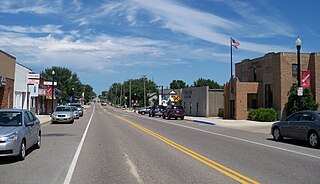
Cokato is a city in Wright County, Minnesota, United States. The population was 2,799 at the 2020 census.
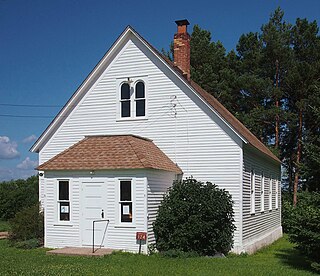
Cokato Township is a township in Wright County, Minnesota, United States. The population was 1,238 at the 2000 census. Cokato Township was organized in 1868, and named for the Sioux language word meaning "at the middle". The 1896 Cokato Temperance Hall is listed on the National Register of Historic Places.
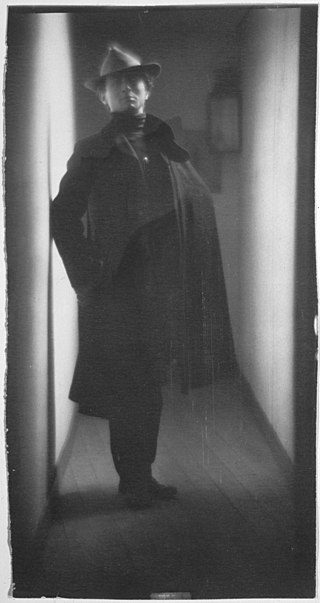
Edward Jean Steichen was a Luxembourgish American photographer, painter, and curator, renowned as one of the most prolific and influential figures in the history of photography.
New Zealand photography first emerged in the mid-nineteenth century, and over time has become an important part of New Zealand art. A number of photography associations exist to support photographers in New Zealand.

The Two Harbors Light is the oldest operating lighthouse in the US state of Minnesota. Overlooking Lake Superior's Agate Bay, the lighthouse is located in Two Harbors, Minnesota. The construction of the lighthouse began in 1891 and was completed the following year, with the light being lit for the first time on April 14, 1892. The first Two Harbors keeper was Charles Lederle and there were normally three keepers assigned to make sure the light was lit every day. The Lighthouse was built to provide safe passage into the Agate Bay Harbor during the early 20th century, as Two Harbors was a major shipping point for the iron ore of the Mesabi Range.

The American Swedish Institute (ASI) is a museum and cultural center in the Phillips West neighborhood of Minneapolis, Minnesota, United States. The organization is dedicated to the preservation and study of the historic role Sweden and Swedish Americans have played in US culture and history. The museum complex includes the Swan Turnblad Mansion, completed in 1908, and the adjoining Nelson Cultural Center, completed in 2012.

The H. H. Bennett Studio is a historic photographic studio and photography museum located in Wisconsin Dells, Wisconsin, United States. The studio building was built in 1875 by noted landscape photographer H. H. Bennett. It was operated by his family until 1998, when the studio was donated to the Wisconsin Historical Society. Today the studio, which is listed on the National Register of Historic Places, serves as a historical museum.
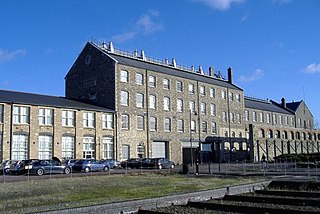
The Historic England Archive is the public archive of Historic England, located in The Engine House on Fire Fly Avenue in Swindon, formerly part of the Swindon Works of the Great Western Railway.

The Crow Wing Historic County Courthouse, in Brainerd, Minnesota, United States, is a Beaux-Arts courthouse built in 1920. The building, along with its adjoining jail, are listed on the National Register of Historic Places.

This is a list of the National Register of Historic Places listings in Blue Earth County, Minnesota. It is intended to be a complete list of the properties and districts on the National Register of Historic Places in Blue Earth County, Minnesota, United States. The locations of National Register properties and districts for which the latitude and longitude coordinates are included below, may be seen in an online map.

This is a list of the National Register of Historic Places listings in Wright County, Minnesota. It is intended to be a complete list of the properties and districts on the National Register of Historic Places in Wright County, Minnesota, United States. The locations of National Register properties and districts for which the latitude and longitude coordinates are included below, may be seen in an online map.

The participation of women in photography goes back to the very origins of the process. Several of the earliest women photographers, most of whom were from Britain or France, were married to male pioneers or had close relationships with their families. It was above all in northern Europe that women first entered the business of photography, opening studios in Denmark, France, Germany, and Sweden from the 1840s, while it was in Britain that women from well-to-do families developed photography as an art in the late 1850s. Not until the 1890s, did the first studios run by women open in New York City.
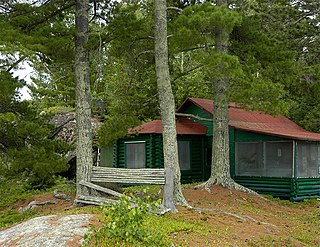
The Jun Fujita Cabin is a historic summer cabin in the U.S. state of Minnesota, owned by photographer and poet Jun Fujita (1888–1963). He built it in 1928 on an island in Rainy Lake, an area of the Boundary Waters that later became Voyageurs National Park. The cabin was listed on the National Register of Historic Places in 1996 for its local significance in the themes of art, Asian ethnic heritage, and entertainment/recreation. It was nominated for its association with Fujita, one of the first Japanese Americans to gain prominence in the American Midwest, and as a rare surviving example of the early recreational development of the Boundary Waters.

Pasadena Museum of History is a private, nonprofit museum and research library located in Pasadena, California. It is the only institution dedicated to the history, art and culture of historic Pasadena and the west San Gabriel Valley. Headquartered on the grounds of a century-old Pasadena estate, facilities include the Pasadena Museum History Center, the Fenyes Estate and gardens, a research library and archives, the Curtin House, and the Finnish Folk Art Museum. With public exhibits, tours, lectures, seminars, and workshops, the Pasadena Museum of History promotes an appreciation of history, culture, arts and sciences relevant to Pasadena and adjoining communities.

Belle Johnson was an American photographer, active primarily in the late 19th and early 20th centuries. Described as "eccentric, independent and unorthodox," Johnson was a charter member of the Federation of Women Photographers, and has been inducted into the Missouri Photojournalism Hall of Fame. Her work, which included character studies, photographs of animals, and still lifes, won numerous awards and frequently appeared in contemporary photography journals in the early 1900s.

The Cokato Temperance Hall is a historic clubhouse built in 1896 in Cokato Township, Minnesota, United States, to serve as an alcohol-free social center in a rural Finnish American community. It was constructed by a local temperance society at a rural crossroads which became known as Temperance Corner. The building was listed on the National Register of Historic Places under its full Finnish name Cokaton P.R.S. Onnen Toivo Raittiusseura in 1976 for its local significance in the themes of European ethnic heritage and social history. It was nominated for its association with the temperance movement and importance to the cultural life of an immigrant community. The hall is now maintained by the Cokato Finnish American Historical Society, which has moved other historical structures nearby to form the Finnish Pioneer Park.

The Hormel Historic Home, also known the Cook-Hormel House or simply The Hormel Home, is a historic Italianate style home with Classical Revival facade located in Austin, Minnesota. The home was built in 1871 and was added to the U.S. National Register of Historic Places in 1982.

The Wheaton Depot is a former train station in Wheaton, Minnesota, United States, built circa 1906 to handle both passengers and freight. It was built by the Chicago, Milwaukee & St. Paul Railroad to replace an 1885 depot that had burned down, and remained in service until 1976. It was listed on the National Register of Historic Places in 1985 as the Chicago, Milwaukee and St. Paul Depot for having local significance in the themes of architecture and transportation. It was nominated for being a well-preserved example of an early-20th-century combination depot built on a standard design, and for being the best symbol of the railroad's crucial impact on the community.


























